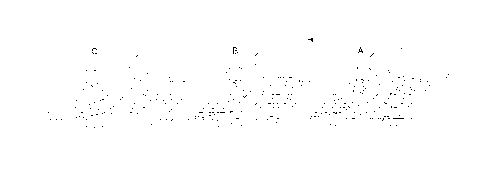Some of the information on this Web page has been provided by external sources. The Government of Canada is not responsible for the accuracy, reliability or currency of the information supplied by external sources. Users wishing to rely upon this information should consult directly with the source of the information. Content provided by external sources is not subject to official languages, privacy and accessibility requirements.
Any discrepancies in the text and image of the Claims and Abstract are due to differing posting times. Text of the Claims and Abstract are posted:
| (12) Patent Application: | (11) CA 2909090 |
|---|---|
| (54) English Title: | KINETIC ENERGY COLLECTOR MECHANISM TO GENERATE ELECTRIC POWER FROM PASSING VEHICLES, USING A MAIN AXLE CONNECTED TO A FLYWHEEL |
| (54) French Title: | MECANISME COLLECTEUR D'ENERGIE CINETIQUE SERVANT A PRODUIRE DE L'ELECTRICITE A PARTIR DES VEHICULES QUI PASSENT, AU MOYEN D'UN ESSIEU PRINCIPAL RELIE A UN VOLANT |
| Status: | Deemed Abandoned and Beyond the Period of Reinstatement - Pending Response to Notice of Disregarded Communication |
| (51) International Patent Classification (IPC): |
|
|---|---|
| (72) Inventors : |
|
| (73) Owners : |
|
| (71) Applicants : |
|
| (74) Agent: | GOWLING WLG (CANADA) LLP |
| (74) Associate agent: | |
| (45) Issued: | |
| (22) Filed Date: | 2015-10-20 |
| (41) Open to Public Inspection: | 2016-04-20 |
| Availability of licence: | N/A |
| Dedicated to the Public: | N/A |
| (25) Language of filing: | English |
| Patent Cooperation Treaty (PCT): | No |
|---|
| (30) Application Priority Data: | ||||||
|---|---|---|---|---|---|---|
|
A kinetic energy collector mechanism for generating electric power from
passing vehicles, said mechanism comprising a main axle connected to a
flywheel. The main axle is supported on two bearings and/or rollers, and has a
half-cylindrical support section for vehicle wheels At least one flywheel is
mounted onto each end of the axle so as to transmit load in only one direction
and to rotate freely in the opposite direction. The main axle is rotatable
between
0° and 120° as the vehicle wheels pass over the half-cylindrical
section of the
main axle, thus driving the attached flywheel. The main axle is returned to
its
resting position by means of springs. The flywheel has enough driving force to
rotate and drive a generator and its corresponding regulator by mechanical
means, which in turn generates electric power that is either delivered to a
power
network or stored in batteries.
Note: Claims are shown in the official language in which they were submitted.
Note: Descriptions are shown in the official language in which they were submitted.

2024-08-01:As part of the Next Generation Patents (NGP) transition, the Canadian Patents Database (CPD) now contains a more detailed Event History, which replicates the Event Log of our new back-office solution.
Please note that "Inactive:" events refers to events no longer in use in our new back-office solution.
For a clearer understanding of the status of the application/patent presented on this page, the site Disclaimer , as well as the definitions for Patent , Event History , Maintenance Fee and Payment History should be consulted.
| Description | Date |
|---|---|
| Common Representative Appointed | 2019-10-30 |
| Common Representative Appointed | 2019-10-30 |
| Application Not Reinstated by Deadline | 2019-10-22 |
| Time Limit for Reversal Expired | 2019-10-22 |
| Deemed Abandoned - Failure to Respond to Maintenance Fee Notice | 2018-10-22 |
| Change of Address or Method of Correspondence Request Received | 2018-01-17 |
| Application Published (Open to Public Inspection) | 2016-04-20 |
| Inactive: Cover page published | 2016-04-20 |
| Inactive: IPC assigned | 2016-03-16 |
| Inactive: First IPC assigned | 2016-03-16 |
| Inactive: IPC assigned | 2016-03-16 |
| Filing Requirements Determined Compliant | 2015-10-28 |
| Inactive: Filing certificate - No RFE (bilingual) | 2015-10-28 |
| Application Received - Regular National | 2015-10-23 |
| Inactive: QC images - Scanning | 2015-10-20 |
| Inactive: Pre-classification | 2015-10-20 |
| Abandonment Date | Reason | Reinstatement Date |
|---|---|---|
| 2018-10-22 |
The last payment was received on 2017-10-18
Note : If the full payment has not been received on or before the date indicated, a further fee may be required which may be one of the following
Please refer to the CIPO Patent Fees web page to see all current fee amounts.
| Fee Type | Anniversary Year | Due Date | Paid Date |
|---|---|---|---|
| Application fee - standard | 2015-10-20 | ||
| MF (application, 2nd anniv.) - standard | 02 | 2017-10-20 | 2017-10-18 |
Note: Records showing the ownership history in alphabetical order.
| Current Owners on Record |
|---|
| HUGO ROBERTO DIAZ |
| Past Owners on Record |
|---|
| None |